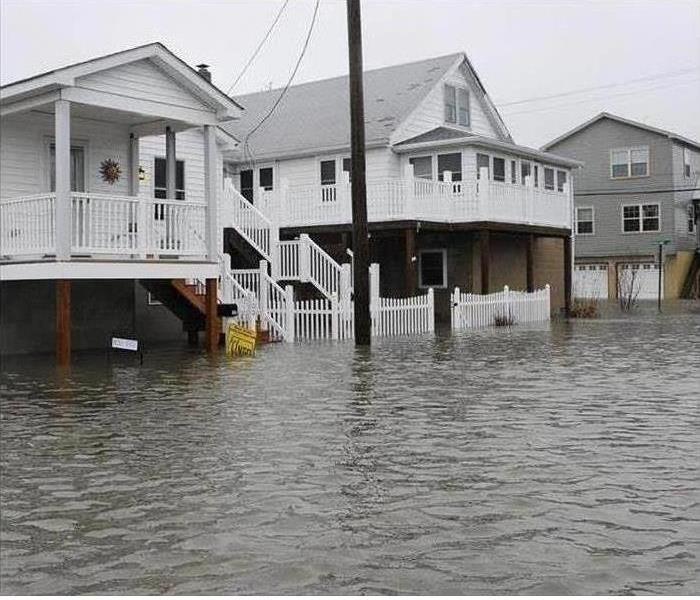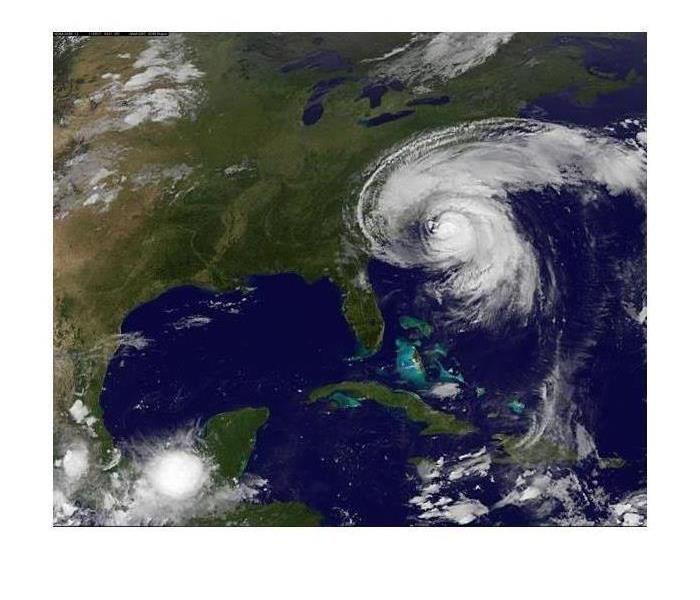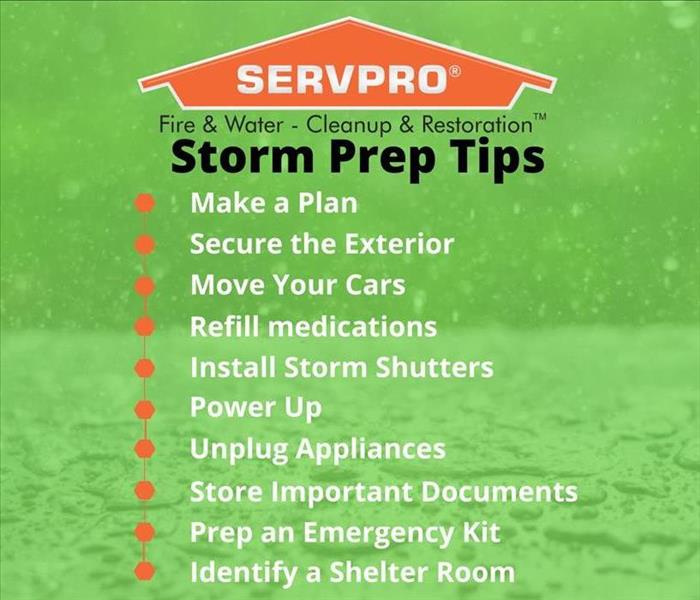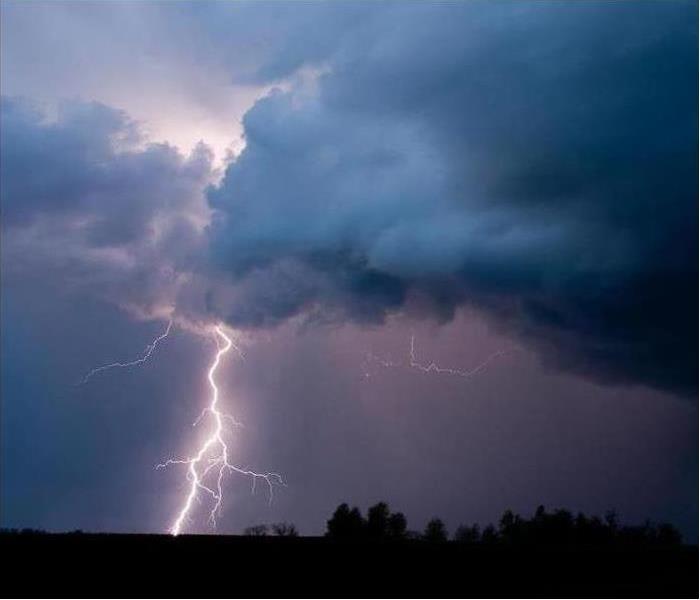Archived Storm Damage Blog Posts
SERVPRO® is your one-stop-shop to make it “Like it never even happened.”
10/3/2023 (Permalink)
 Localized flooding and SERVPRO® of Brunswick and South Columbus Counties can help with the clean-up.
Localized flooding and SERVPRO® of Brunswick and South Columbus Counties can help with the clean-up.
Storms can pound the Brunswick County area, including Southport. SERVPRO® of Brunswick & South Columbus Counties responded immediately to your flood and storm damage emergencies. We have the storm damage restoration experience and specialized equipment to restore your Southport home or business back to pre-storm condition. When a storm hits your Southport home or business, you need help immediately. Our quick response will help prevent secondary damage and help reduce restoration costs. We live and work in this community too; we might even be neighbors. As a locally owned and operated business, SERVPRO® of Brunswick & South Columbus Counties is close by and ready to respond to your flood or storm damage emergency. We are proud to be an active member of the Southport community and want to do our part to make our community the best it can be. If you need our help, call us today at 910-755-6717.
We will respond immediately to the storm or flood event
9/12/2022 (Permalink)
 SERVPRO of Brunswick & South Columbus Counties are storm and water damage restoration specialists.
SERVPRO of Brunswick & South Columbus Counties are storm and water damage restoration specialists.
Green vans and trucks driving on highway can respond immediately to any storm or flood event.
Storms and inclement weather can be devastating to any business. Wind damage, heavy rain, and flooding can occur suddenly and cause substantial damage in a matter of minutes. There’s never a convenient time for flooding or storm damage to strike your business. Every hour spent cleaning up is an hour of lost revenue and productivity. So when an emergency situation arises in your business, give us a call and we’ll be there fast with the help you need.
SERVPRO of Brunswick & South Columbus Counties will respond immediately to the storm or flood event affecting your commercial property, regardless of the size or scope of the damage. We are part of a national network of over 1,700 Franchises with special Disaster Recovery Teams placed strategically throughout the country to respond to large-scale events and disasters.
Hurricane Season Preparedness in Brunswick County
8/23/2022 (Permalink)
 Summer is coming to a close in Southeastern North Carolina, but it is still hurricane season. Below is some basic information and tips for protection
Summer is coming to a close in Southeastern North Carolina, but it is still hurricane season. Below is some basic information and tips for protection
Summer is coming to a close in Southeastern North Carolina, but it is still hurricane season. Below is some basic information and tips for protecting your Brunswick County home or business during Hurricane season. It is best to be knowledgeable, have a plan, and be prepared.
Hurricanes are massive storm systems that form over the water and move toward land. Threats from hurricanes include high winds, heavy rainfall, storm surge, coastal and inland flooding, rip currents, and tornadoes. These large storms are called typhoons in the North Pacific Ocean and cyclones in other parts of the world.
The Atlantic hurricane season runs from June 1 to November 30, with the peak occurring between mid-August and late October.
Basic Preparedness Tips
- Know where to go. If you are ordered to evacuate, know the local hurricane evacuation route(s) to take and have a plan for where you can stay. Contact your local emergency management agency for more information.
- Put together a go-bag: disaster supply kit, including a flashlight, batteries, cash, first aid supplies, medications, and copies of your critical information if you need to evacuate
- If you are not in an area that is advised to evacuate and you decide to stay in your home, plan for adequate supplies in case you lose power and water for several days and you are not able to leave due to flooding or blocked roads.
- Make a family emergency plan.
- Many communities have text or email alerting systems for emergency notifications. To find out what alerts are available in your area, search the Internet with your town, city, or county name and the word “alerts.”
Preparing Your Home or Business
- Hurricane winds can cause trees and branches to fall, so before hurricane season trim or remove damaged trees and limbs to keep you and your property safe.
- Secure loose rain gutters and downspouts and clear any clogged areas or debris to prevent water damage to your property.
- Reduce property damage by retrofitting to secure and reinforce the roof, windows, and doors, including the garage doors.
- Purchase a portable generator or install a generator for use during power outages. Remember to keep generators and other alternate power/heat sources outside, at least 20 feet away from windows and doors and protected from moisture; and NEVER try to power the house wiring by plugging a generator into a wall outlet.
If you are affected by a strong storm or hurricane, SERVPRO of Brunswick & South Columbus Counties. can help. If you need our services, call us today at (910) 755-6717.
Preparedness Basics
12/6/2021 (Permalink)
 Having SERVPRO's number ready is an important step in Emergency Preparedness in Brunswick County
Having SERVPRO's number ready is an important step in Emergency Preparedness in Brunswick County
Below is some basic information and tips for protecting your Brunswick county home or business during Hurricane season. It is best to be knowledgeable, have a plan, and be prepared.
Hurricanes are massive storm systems that form over the water and move toward land. Threats from hurricanes include high winds, heavy rainfall, storm surge, coastal and inland flooding, rip currents, and tornadoes. These large storms are called typhoons in the North Pacific Ocean and cyclones in other parts of the world.
Each year, many parts of the United States experience heavy rains, strong winds, floods, and coastal storm surges from tropical storms and hurricanes. Affected areas include all Atlantic and Gulf of Mexico coastal areas and areas over 100 miles inland, Puerto Rico, the U.S. Virgin Islands, Hawaii, parts of the Southwest, the Pacific Coast, and the U.S. territories in the Pacific. A significant per cent of fatalities occur outside of landfall counties with causes due to inland flooding.
The Atlantic hurricane season runs from June 1 to November 30, with the peak occurring between mid-August and late October.
Basic Preparedness Tips
- Know where to go. If you are ordered to evacuate, know the local hurricane evacuation route(s) to take and have a plan for where you can stay. Contact your local emergency management agency for more information.
- Put together a go-bag: disaster supply kit, including a flashlight, batteries, cash, first aid supplies, medications, and copies of your critical information if you need to evacuate
- If you are not in an area that is advised to evacuate and you decide to stay in your home, plan for adequate supplies in case you lose power and water for several days and you are not able to leave due to flooding or blocked roads.
- Make a family emergency plan.
- Many communities have text or email alerting systems for emergency notifications. To find out what alerts are available in your area, search the Internet with your town, city, or county name and the word “alerts.”
Preparing Your Home
- Hurricane winds can cause trees and branches to fall, so before hurricane season trim or remove damaged trees and limbs to keep you and your property safe.
- Secure loose rain gutters and downspouts and clear any clogged areas or debris to prevent water damage to your property.
- Reduce property damage by retrofitting to secure and reinforce the roof, windows and doors, including the garage doors.
- Purchase a portable generator or install a generator for use during power outages. Remember to keep generators and other alternate power/heat sources outside, at least 20 feet away from windows and doors and protected from moisture; and NEVER try to power the house wiring by plugging a generator into a wall outlet.
- Consider building a safe room or ICC 500 storm shelter designed for protection from high-winds and in locations above flooding levels.
Hurricane preparedness in Brunswick County
10/26/2021 (Permalink)
 Make sure to always be prepared for Hurricane season!
Make sure to always be prepared for Hurricane season!
We are in Hurricane season in Southeast North Carolina. To get yourself and your Brunswick County home prepared, below are some tips.
To prepare for a hurricane, you should take the following measures:
- To begin preparing, you should build an emergency kit and make a family communications plan.
- Know your surroundings.
- Learn the elevation level of your property and whether the land is flood-prone. This will help you know how your property will be affected when storm surge or tidal flooding are forecasted.
- Identify levees and dams in your area and determine whether they pose a hazard to you.
- Learn community hurricane evacuation routes and how to find higher ground. Determine where you would go and how you would get there if you needed to evacuate.
- Make plans to secure your property:
- Cover all of your home’s windows. Permanent storm shutters offer the best protection for windows. A second option is to board up windows with 5/8” marine plywood, cut to fit and ready to install. Tape does not prevent windows from breaking.
- Install straps or additional clips to securely fasten your roof to the frame structure. This will reduce roof damage.
- Be sure trees and shrubs around your home are well trimmed so they are more wind resistant.
- Clear loose and clogged rain gutters and downspouts.
- Reinforce your garage doors; if wind enters a garage it can cause dangerous and expensive structural damage.
- Plan to bring in all outdoor furniture, decorations, garbage cans and anything else that is not tied down.
- Determine how and where to secure your boat.
- Install a generator for emergencies.
- If in a high-rise building, be prepared to take shelter on or below the 10th floor.
- Consider building a safe room.
If you need help with a Water/Storm emergency call SERVPRO of Brunswick and South Columbus Counties at 910-755-6717.
Remediating Water Damage in Ocean Isle Beach After a Storm
10/1/2021 (Permalink)
 Damaged roofing or siding can allow a great quantity of water to enter your home. Contact SERVPRO right away for water removal after a storm.
Damaged roofing or siding can allow a great quantity of water to enter your home. Contact SERVPRO right away for water removal after a storm.
Team SERVPRO Has the Experienced Technicians and Effective Equipment for Water Removal After a Storm
Making up part of the North Carolina coast, Ocean Isle Beach can take the brunt of any storm and come out the other end. That does not mean there is not cleanup or other restoration efforts required once the rain stops.
Much of the Ocean Isle Beach damage comes from a storm lifting or pulling siding and roofing tiles off the home and then water blows in behind or underneath them. SERVPRO understands that, unlike a basic flood, or a plumbing failure, this can mean water intrusion from the attic down to the sub-floor and crawlspace.
In this situation, our first action is to split the response team and handle two tasks at once; remove the water and protect the home. Technicians bring in a commercial-grade pump to draw out any standing water and then switch to extraction wands for smaller amounts. The reasons here are to remove the source of further damage to the home and allow floors, carpets, floor trim, and drywall to begin drying as quickly as possible.
As they remove the water, other SERVPRO team members secure the home against further damage from rain and other storm effects. These specialists board up broken windows and use either plastic sheeting or plywood panels to cover holes in the roof and other damage to the walls along the roofline. These same actions to reduce water damage also protect homes from secondary problems like animal intrusions, trespassing, and looting after a storm.
Once the water is gone and the home secure, our teams reduce the effects already caused by the storm. They start with an inspection of the attic insulation for water intrusion. If the insulation, rolled or blown-in, is soaked from the storm, technicians remove it and then use dehumidifiers and air movers to dry the attic completely before new insulation can be brought in to replace it.
Moving down into the house, specialists examine walls and ceiling panels. If water has soaked in, team members remove and dispose of them since drywall is cheaper to replace than spend the labor hours attempting to restore them. If needed, the team uses the same air movers and dehumidifiers to dry the framing and wall cavities before installing new panels.
These actions are only the first steps SERVPRO of Brunswick and South Columbus takes to return every home to its original state after a storm. If you need us, call today at (910) 755-6717 to set up an inspection.
Click here for more information on the town of Ocean Isle Beach.
No Job is Too Large for SERVPRO
9/30/2021 (Permalink)
 SERVPRO’s Commercial Large Loss program can help with jobs of all sizes
SERVPRO’s Commercial Large Loss program can help with jobs of all sizes
When a storm hits your Southport home or business, you need help immediately. Our quick response will help prevent secondary damage and help reduce restoration costs. And no storm or job is too large for SERVPRO.
The SERVPRO Commercial Large Loss Division is composed of our best of the best in restoration. Our elite large-loss specialists are prequalified and strategically positioned throughout the United States to handle any size disaster.
Every large loss is supervised by a commercial operations manager to help ensure seamless communication and timely mitigation.
At SERVPRO, the difference is our ability to dispatch trained production professionals and cut costs through the strategic placement and oversight of temporary labor. Get the professionals, call SERVPRO.
Should a storm or major event strike, call SERVPRO of Brunswick and South Columbus Counties. 910-755-6717
Storms and Flood tips for Brunswick County
9/21/2021 (Permalink)
 Safety is the number one concern!
Safety is the number one concern!
For the past few weeks this summer the Brunswick County area has experienced rainfall well over historical averages. Below are tips for dealing with water damage, especially from a storm.
After any water damage situation, your primary focus should be safety first:
- Is it safe to stay in the house?
- Electrical and "slip and fall" hazards are some of the most prevalent concerns.
- Only do activities that are safe for you to perform.
- Wet materials can be VERY heavy. Be careful!
Have A Water Damage Emergency? Call SERVPRO of Brunswick and South Columbus Counties 910-755-6717
What To Do After Flooding
- Remove excess water by mopping and blotting.
- Wipe excess water from wood furniture after removal of lamps and tabletop items.
- Remove and prop wet upholstery and cushions.
- Place aluminum foil or wood blocks between furniture legs and wet carpeting.
- Turn air conditioning on for maximum drying in summer.
- Remove colored rugs from wet carpeting.
- Remove art objects to a safe, dry place.
- Gather loose items from floors.
What NOT To Do After Flooding
- Don't leave wet fabrics in place. Hang furs and leather goods.
- Don't leave books, magazines or other colored items on wet carpet or floors.
- Don't use your household vacuum to remove water.
- Don't use television or other household appliances.
- Don't turn on ceiling fixtures if ceiling is wet, and keep out of rooms where ceilings are sagging.
 Localized flooding and SERVPRO® of Brunswick and South Columbus Counties can help with the clean-up.
Localized flooding and SERVPRO® of Brunswick and South Columbus Counties can help with the clean-up.





 24/7 Emergency Service
24/7 Emergency Service






